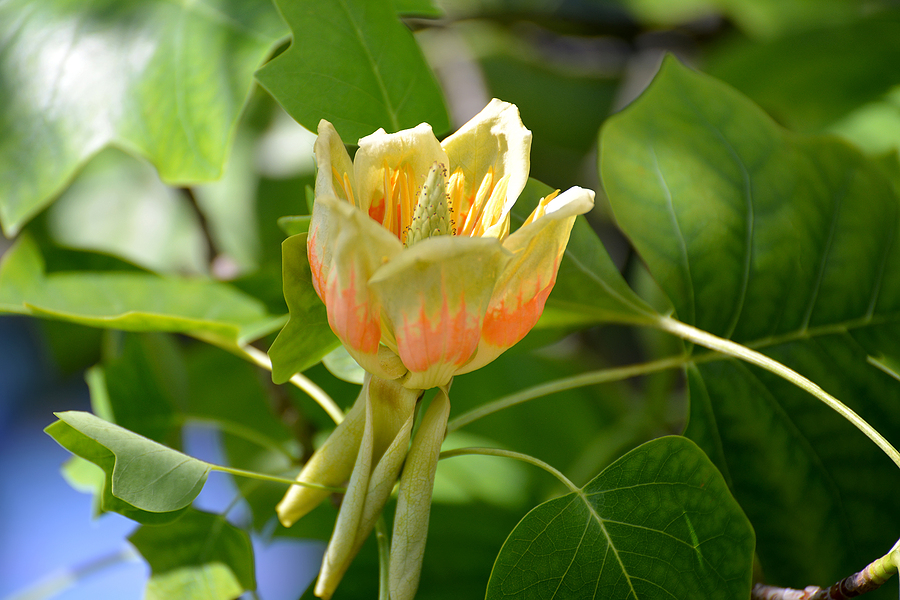There are various tree species here in Indiana, ranging in color, size, shape, growth patterns, and more. But all trees can be categorized into one of two categories: deciduous or conifer. Deciduous trees shed their foliage in the fall and re-bloom them in the spring. Conifer trees, also known as evergreens, keep their foliage all year long.
When trying to determine if a tree is an angiosperm or gymnosperm, your first step is to determine if it is a deciduous or conifer. Continue reading to learn the difference between an angiosperm and gymnosperm in order to improve your tree identification skills!

Frequently Asked Questions About Angiosperms and Gymnosperms
What are Angiosperms?
Angiosperms are a taxonomic class of flowering trees. These trees produce seeds that, when matured, is enclosed in an ovule (usually a fruit). For example, an apple is the mature seed that an angiosperm tree produces. The apple is the ovary, or ovule. Angiosperm trees lose their leaves in the fall, and regrow them in the spring, making them a deciduous tree. They are classified as hardwoods, and include species like oaks, maples, dogwoods, and more.
Common Angiosperms:
▷ Lilies
▷ Orchids
▷ Roses
▷ Sunflowers
▷ Oak Trees
▷ Maple Trees
▷ Fruit-Bearing Trees
What are Gymnosperms?
Gymnosperms are a taxonomic class of non-flowering trees that produce a mature seed that is not enclosed inside an ovule of any kind. A pine cone is a perfect example. Also known as “naked seed”, gymnosperm trees are softwoods, and do not lose their foliage in the winter. This makes these conifers. Species include pine trees, cedars, spruces, and firs.
Common Gymnosperms:
▷ Pine Trees
▷ Conifers
▷ Cycads
▷ Spruce Trees
▷ Firs
How Can You Tell the Difference Between the Two?
Here is the general rule to remember: Conifers are gymnosperms and deciduous trees are angiosperms. There are exceptions to the rule, however. You see, some angiosperms keep their leaves in the winter, such as live oak, sweet bay magnolia, and rhododendron trees. And gymnosperm trees do lose their foliage in the winter, such as ginkgo, dawn redwood, and bald cypress trees.
Looking for prompt and professional tree care in your area? Contact Complete Tree Care at 317-783-2518 for Indianapolis Indiana tree services you can trust. We serve residential and commercial clients.
You Might Also Enjoy:
Common Glossary Terms for Tree Leaves
What are Monocots and Dicots?
What are the Layers of a Tree Trunk?

